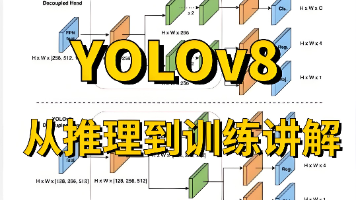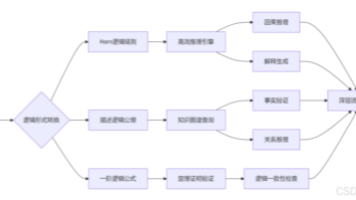Java设计模式详解:掌握这些模式让你的代码更优雅、更高效
掌握这些设计模式,不仅能帮助你写出更优雅、更高效的代码,还能提高你的编程水平和代码质量。如果你觉得这篇文章对你有所帮助,欢迎分享给你的朋友或者在评论区留言讨论!关注我,获取更多Java编程技巧和最新技术分享!
·
设计模式是软件开发中的最佳实践,帮助开发者解决常见的设计问题。通过使用设计模式,可以提高代码的可维护性、可扩展性和重用性。本文将详细介绍几种常用的Java设计模式,包括创建型模式、结构型模式和行为型模式,并提供相应的代码示例。
1. 创建型模式
创建型模式关注对象的创建过程,主要包括单例模式、工厂模式、抽象工厂模式、建造者模式和原型模式。
单例模式(Singleton)
单例模式确保一个类只有一个实例,并提供全局访问点。
public class Singleton {
private static Singleton instance;
private Singleton() {}
public static synchronized Singleton getInstance() {
if (instance == null) {
instance = new Singleton();
}
return instance;
}
}
工厂模式(Factory Method)
工厂模式定义一个创建对象的接口,让子类决定实例化哪一个类。
interface Product {
void use();
}
class ConcreteProductA implements Product {
public void use() {
System.out.println("Using Product A");
}
}
class ConcreteProductB implements Product {
public void use() {
System.out.println("Using Product B");
}
}
abstract class Factory {
abstract Product createProduct();
public void doSomething() {
Product product = createProduct();
product.use();
}
}
class ConcreteFactoryA extends Factory {
Product createProduct() {
return new ConcreteProductA();
}
}
class ConcreteFactoryB extends Factory {
Product createProduct() {
return new ConcreteProductB();
}
}
2. 结构型模式
结构型模式关注类和对象的组合,主要包括适配器模式、装饰者模式、代理模式、外观模式、桥接模式和组合模式。
适配器模式(Adapter)
适配器模式将一个类的接口转换成客户期望的另一个接口,使得原本因接口不兼容而不能一起工作的类可以合作。
interface Target {
void request();
}
class Adaptee {
void specificRequest() {
System.out.println("Specific request");
}
}
class Adapter implements Target {
private Adaptee adaptee;
Adapter(Adaptee adaptee) {
this.adaptee = adaptee;
}
public void request() {
adaptee.specificRequest();
}
}
装饰者模式(Decorator)
装饰者模式动态地给对象添加一些额外的职责。
interface Component {
void operation();
}
class ConcreteComponent implements Component {
public void operation() {
System.out.println("ConcreteComponent operation");
}
}
abstract class Decorator implements Component {
protected Component component;
Decorator(Component component) {
this.component = component;
}
public void operation() {
component.operation();
}
}
class ConcreteDecoratorA extends Decorator {
ConcreteDecoratorA(Component component) {
super(component);
}
public void operation() {
super.operation();
System.out.println("ConcreteDecoratorA operation");
}
}
class ConcreteDecoratorB extends Decorator {
ConcreteDecoratorB(Component component) {
super(component);
}
public void operation() {
super.operation();
System.out.println("ConcreteDecoratorB operation");
}
}
3. 行为型模式
行为型模式关注对象之间的职责分配,主要包括策略模式、观察者模式、命令模式、迭代器模式、模板方法模式和状态模式。
策略模式(Strategy)
策略模式定义了一系列算法,将每个算法封装起来,并使它们可以互换。
interface Strategy {
void execute();
}
class ConcreteStrategyA implements Strategy {
public void execute() {
System.out.println("Executing Strategy A");
}
}
class ConcreteStrategyB implements Strategy {
public void execute() {
System.out.println("Executing Strategy B");
}
}
class Context {
private Strategy strategy;
Context(Strategy strategy) {
this.strategy = strategy;
}
void setStrategy(Strategy strategy) {
this.strategy = strategy;
}
void executeStrategy() {
strategy.execute();
}
}
观察者模式(Observer)
观察者模式定义对象间的一种一对多依赖关系,当一个对象的状态发生改变时,所有依赖于它的对象都得到通知并自动更新。
import java.util.ArrayList;
import java.util.List;
interface Observer {
void update();
}
class ConcreteObserver implements Observer {
public void update() {
System.out.println("Observer updated");
}
}
class Subject {
private List<Observer> observers = new ArrayList<>();
void attach(Observer observer) {
observers.add(observer);
}
void detach(Observer observer) {
observers.remove(observer);
}
void notifyObservers() {
for (Observer observer : observers) {
observer.update();
}
}
}
结语
掌握这些设计模式,不仅能帮助你写出更优雅、更高效的代码,还能提高你的编程水平和代码质量。如果你觉得这篇文章对你有所帮助,欢迎分享给你的朋友或者在评论区留言讨论!
关注我,获取更多Java编程技巧和最新技术分享!

私人微信

更多推荐
 已为社区贡献12条内容
已为社区贡献12条内容









所有评论(0)